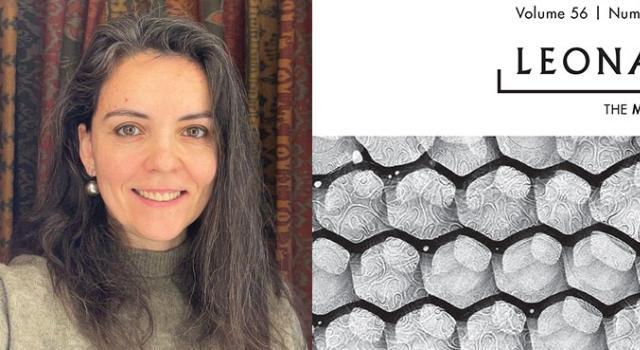
Kaća Bradonjić

Kaća Bradonjić received her B.S. in philosophy and physics from Northeastern University and her Ph.D. in physics from Boston University.
Situated at the intersection of physics and philosophy, Kaća’s research is focused on foundational questions of the physical interpretation of the mathematical formulations of gauge theories of gravity, and particularly on the role of conformal and projective structures.
Kaća’s artistic work explores the use of metaphor as means of understanding the relations among physical, intellectual, and emotional spaces. A project of note is Projections, a series of paintings based on impressions of academic talks.
Prior to coming to Hampshire College, she taught at Wellesley College and Boston University. More details about her work can be found on her personal website.
Recent and Upcoming Courses
-
Physics I covers the fundamental principles of physics by teaching classical mechanics, while emphasizing the correspondence to quantum physics. The topics will include the essence of measurement, properties of elementary constituents of Nature (particles and probability waves), mechanics (motion and its causes), and fundamental interactions. Special focus will be placed on general principles, such as the conservation laws (energy, linear and angular momentum, spin) and the superposition principle. Students will approach these topics in an active-learning style, wherein hands-on lab activities are integrated with problem-solving sessions and mini-lectures. The course aims itself at all who seek a basic understanding of the fundamental laws of physics, including students on pre-professional track, students who focus on physical or mathematical sciences, and students who have philosophical interests in quantum mechanics. Readings and written work will be assigned for each class. Keywords:physics, science
-
Scientists study the physical world at spatial, temporal, and complexity scales that are beyond the reach of ordinary perception. How does a scientist construct their understanding of the physical world at those scales? This course takes a transdisciplinary approach to the study of scientific understanding. What role does visualization play in the formation of scientific knowledge? How do various forms of representation become accepted scientific practice? How can artistic practice help us illuminate what it means to understand something in a scientific context? This course is for students of science, math, art, philosophy, education, and cognitive science interested in bringing their disciplinary skills to approach such questions through independent group research projects, and a study of common texts in history and philosophy of science, education, cognitive science, and the visual arts. Coursework includes weekly research, reading, and writing assignments, class discussions and presentations, and semester-long group projects. Keywords:science, art, philosophy This course could be used to fulfill the Division II Project requirement.
-
Energy is everywhere, we hear. But what exactly does that mean? In this course we will use the concept of energy in physics to describe and explain a wide range of physical phenomena, including interactions of particles at the subatomic level, functioning of living systems, technologies driving the modern world, and changes to the Earth's climate. We will learn about the mechanisms by which energy can be transformed, transmitted, and stored, and will use basic algebra and graphs to develop a quantitative understanding of the material. Throughout the course, we will consider how individual and collective energy consumption intersect with the social, economic, and political aspects of our society, as well as the environment. Students will be evaluated based on participation in the class activities, weekly assignments, and one project with presentation. KEYWORDS:physics, energy, power, environment, climate
-
This course will explore the concept of color and its use in the visual arts from the perspective of a physicist. We will cover the basics of wave mechanics and the electromagnetic theory needed to describe light as an electromagnetic wave, the absorption and emission of light through quantum-mechanical processes and basic optics. We will then explore the relation between these physical principles and the fundamentals of color theory and its application in art. Among other things, we will study the physics of additive and subtractive color mixing: the basics of saturation, hue and brightness: the mechanisms by which the perception of color emerges from the interaction of light with the retina and the processing of the resulting neural signals in the brain. The course will be of interest to students with either science or art concentrations who are interested in the interplay between the two. High school algebra and trigonometry will be reviewed and used throughout the course. Readings and written work will be assigned for each class. KEYWORDS:physics, color, art, light


